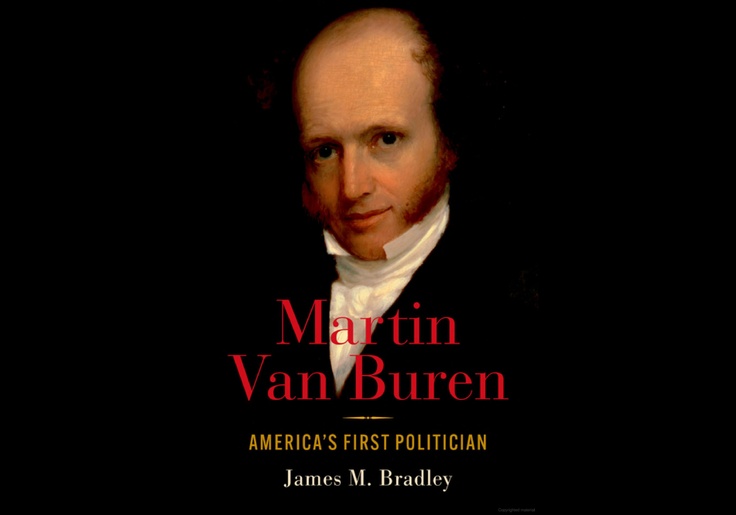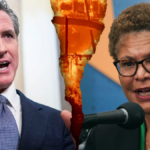The Curious Case of Martin Van Buren

Martin Van Buren should never have been president. That’s not an insult.
America’s eighth chief executive belongs to a distinct phylum of presidents: those who possessed skills both extraordinary enough to elevate them to the White House and yet not quite aligned with what the nation actually needs from a commander in chief.
James Madison, for instance, may have been the greatest political theorist in the nation’s history, but that was not necessarily the right skill set for the man presiding over the War of 1812. William Howard Taft’s talents were better suited for the Supreme Court (where he ended up post-presidency) than the Oval Office. Herbert Hoover had a technocratic genius for tasks like leading the humanitarian effort that kept Europe from starvation during World War I, but that also led him to overestimate his power to steer the country out of the Great Depression.
Van Buren’s case is perhaps more remarkable than any of these, however, because the job for which he was best suited didn’t exist until he created it: political strategist. As James M. Bradley notes early on in his sweeping new biography, Martin Van Buren: America’s First Politician, Van Buren “built and designed the party system that defined how politics was practiced and power wielded in the United States.”
That’s a bold statement, but not a hyperbolic one. As Bradley ably demonstrates, virtually every major political innovation of the early 19th century—an affirmative embrace (rather than grudging acceptance) of parties; the patronage-driven spoils system; the expansion of the franchise; political conventions; open electioneering of a type that candidates previously abjured—can trace their lineage, at least in part, to Martin Van Buren. That’s all in addition to the fact that he was the Democratic Party’s chief political svengali in the era, earning the 5’ 6″ New Yorker the nickname “The Little Magician.”
That Van Buren accomplished this much behind the scenes is doubly impressive given that he was simultaneously building one of the thickest résumés in presidential history. He served, by turns, as a state legislator, state attorney general, U.S. senator, governor, U.S. secretary of state, ambassador to Britain, and vice president. In 1836, he was elected president to succeed the retiring Andrew Jackson, one of only two instances in American history when an incumbent vice president has won the White House. His campaign was not unlike that of the only other man to pull off this feat, George H.W. Bush. Van Buren was essentially marketed as the “kinder, gentler” version of Old Hickory—which is not saying much. Virtually any American would’ve been kindler and gentler than Andrew Jackson.
Van Buren went on to lose his reelection bid to William Henry Harrison in 1840, which was itself a political achievement: up until that point, all the evidence suggested that the only way a president could lose reelection was to be a member of the Adams family (John and John Quincy were the only previous one-termers). But even this doesn’t provide a full accounting of Van Buren’s influence on the era. Democrats nearly nominated him for a third time in 1844, only switching to James K. Polk because Van Buren was squeamish about the idea of annexing Texas. In 1848, Van Buren ran what was, at the time, the most successful third-party candidacy in American history, standing (albeit half-heartedly) as the presidential nominee of the Free Soil Party, dedicated to preventing the expansion of slavery to newly acquired territories. Few men have ever been so central to American politics that they were a seminal figure in five consecutive presidential elections.
And yet, despite that mountain of accomplishments, Van Buren has to be regarded as a somewhat tragic figure. Upon his death in 1862, Bradley notes, the New York Times ran a caustic obituary that predicted the eighth president would be remembered “as a skilled and not unsuccessful politician, but not as an elevated statesman, or a benefactor of his country.” It was as indecorous as it was astute—and hinted at the former president’s most peculiar trait: Martin Van Buren was a master of acquiring political power and yet seemed to have no deep convictions about its proper ends.
Readers of Bradley’s incisive, thoroughly researched biography will be struck by the resulting paradox: Van Buren was a central figure in virtually every political controversy of his day and contributed little to any of them apart from a farrago of evasion, doublespeak, and cynicism.
As a New York state legislator, Van Buren voted to eliminate slavery in the Empire State; as a presidential candidate whose success relied on carrying the South, he directed his political machine to go to war with the abolitionist movement to prove his fides.
When the Amistad case went to court during his presidency (Van Buren’s brief portrayal in Steven Spielberg’s film about the controversy is his only pop culture footprint apart from the “Van Buren Boys” episode of Seinfeld), he was so anxious to be rid of the issue that he agreed to an illegal scheme that would, in the event of a conviction, have seen the kidnapped Africans sent to Cuba before they could file an appeal.
Tasked with finishing the job of Indian removal that Jackson had begun, it was Van Buren who actually presided over the Trail of Tears. The events seem to have disturbed him only insofar as they distracted from his other policy priorities. As Bradley describes in heartbreaking detail, the president almost entirely delegated the task and didn’t so much as blink at the fact that his administration engaged in bad-faith negotiations that served little purpose apart from buying the time necessary for the military to begin the forced removal of natives.
Perhaps the most telling incident in Van Buren’s career was his role in the “tariff of abominations,” the 1828 measure that pushed import duties so high that it led restive Southerners like John C. Calhoun to start flirting with the idea of nullification. Van Buren quarterbacked the measure as a senator—not because he believed in it, but because he simply wanted to take the tariff issue away from John Quincy Adams in advance of that year’s presidential election.
The most famous vignette in the ensuing debate over unionism vs. states’ rights occurred at an 1830 Jefferson Day Dinner, when Vice President Calhoun offered a toast to “the union: next to our liberty, most dear” only to be answered with an icy “Our union: It must be preserved” by President Jackson. Bradley provides damning context by noting that Van Buren’s toast was a characteristically vaporous call for “mutual forbearance and reciprocal concessions.” There’s a reason that Jackson once noted, upon seeing Van Buren seated atop a skittish horse, that he had been paired with an animal “even more noncommittal than his rider.”
Martin Van Buren has long needed an authoritative biography and Bradley’s volume is so authoritative, well-written, and politically literate that it’s unlikely to be surpassed in our lifetimes. Readers, however, should be prepared to forgive this book for the shortcomings of its subject—an essentially hollow figure.
In fact, one comes to the end of the 500-some pages here with little sense of Van Buren’s personality—not because Bradley’s excavation is insufficient but because the former president’s grave is empty. When Jackson and Van Buren had a falling out late in the former’s life (over the Texas annexation question), Jackson went to his deathbed lamenting the rupture. Van Buren, Bradley tells us, regarded the lapsed friendship with his closest professional partner as “nothing personal, just the nature of politics.” Van Buren wrote an over-800-page autobiography that never once mentioned his wife. He had no friends outside of politics. And, as Bradley notes in the book’s final pages, Van Buren died heartbroken and embittered—not because of personal tragedies (of which he had several) but because his career had ended in lost elections.
Martin Van Buren had talent and ambition in surplus. A close examination of his life suggests he didn’t have much else. “The first politician” indeed.
Martin Van Buren: America’s First Politician
by James M. Bradley
Oxford University Press, 632 pp., $35
Troy Senik is a former presidential speechwriter and the author of A Man of Iron: The Turbulent Life and Improbable Presidency of Grover Cleveland.



